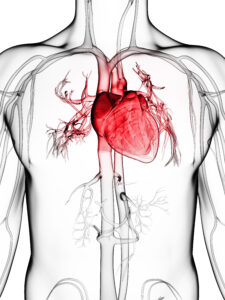
The Heart Sound Recorder (HSR) Determining Nutrition for a Healthy Heart
Your heart is the most important muscle in the body. Every day it beats 100,000 times, sending 2,000 gallons of blood through 60,000 miles of blood vessels. To function optimally, it is vital that the heart have the proper nutritional balance present in the body to maintain its correct rate, rhythm and tone.
Dr. Royal Lee of Standard Process, along with a number of revered practitioners of his time, believed that disease was nothing more than malnutrition. These early practitioners determined that the heart almost instantly reflected changes in the body chemistry. Dr. Lee then set out to build a sound recording device that would be beneficial for observing the effects of nutrition on the heart.
From that, the Endocardiograph was created. It is an instrument designed to observe the heart sounds and motion through which practitioners gain insight into specific nutritional deficiencies. Although the original Endocardiograph was created in 1934, restored Endocardiographs are still very much in use today. Now we also have the new digital version known as the Heart Sound Recorder or “HSR”.
The HSR and the Endocardiograph are non-invasive where a specialized microphone is placed over each of the four valves of the heart. The Endocardiograph then graphs the sound and movement of the hearts so that the rate, rhythm, and tone of the heart may be evaluated.
Your heart absorbs nutrients very quickly for the reason that your body is primarily concerned with keeping it beating. Dr. Lee determined which whole food nutrients would restore the correct rate, rhythm and tone of the heart. Then, when proper nutrition is supplied to the body, the improvement in the heart is reflected in subsequent graphs, often within minutes. The Endocardiograph can be an important tool in evaluating your overall health and then in following the progress you are making when under proper nutritional care.
The correction in the nutritional status of the heart then also reflects throughout the body in greater endurance, ability to rest, and overall well being.
Our office can evaluate the effectiveness of your heart’s Rhythm, Rate and Tone using the Heart Sound Recorder. This is one way to examine whether or not your body is receiving the proper nutritional balance it needs. This Heart Sound Recorder “HSR” functions to record the sounds of your heart with a visual black and white view of the beats, the balance between the work and rest ratios of the heart beats and any irregularities that may exist. Your heart is the center of your body and can show a need for many nutrients like B vitamins, calcium, vitamin C, essential fatty acids, etc. Additionally we can see if the body needs support for digestive dysfunction and adrenal insufficiency (again, your hormones!) with this tool. This is imperative for not only proper function of the body but overall vitality!
RATE – The “Autonomic Nervous System” controls the rate at which the heart beats
There are two sides to the nervous system. The first side is the Sympathetic nervous system, which is like the accelerator of the car (your “fight or flight” response). The second side is the Parasympathetic system. This is like the brakes of the car (you “rest and digest” response). Some bodily functions are directed by the autonomic nervous system such as digestion, heart rate, and blood pressure. These are influenced by diet, vitamins, minerals, and other factors.
RHYTHM – This is the “lub dub” sounds of the heart, which should have a specific work to rest ratio.
The heart should be resting twice as long as it’s working. The HSR allows us to look at these sounds and the balance between the work and rest ratio. They rhythm can be supported with nutrition that will help balance a heart that is working too long or not resting long enough. Although everyone’s work to rest ratio varies, there are certain guidelines that they should fall within.
TONE – This includes the opening and closing of the heart chambers.
On the HSR graph, the tone of the heart can be observed by the height and the width of the two sounds made by the heart’s ‘lub dub’ sound. The first sound, ‘lub,’ should be two to three times the size of the second sound, ‘dub.’ To get a better understanding of why the sizes should be significantly different, ‘lub’ pushes the blood throughout your body, whereas, ‘dub’ allows the heart to refill and prepare for the next cardiac cycle.
*Anyone may have this scan done, it is not limited to current patients. Please call the office to schedule an appointment for the HSR specifically.



